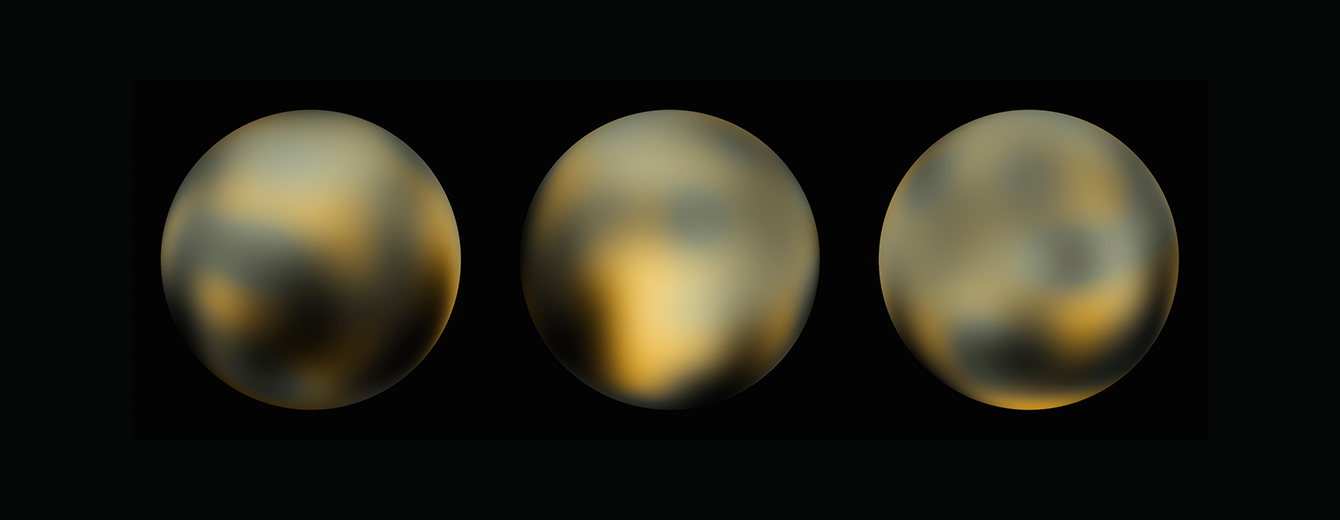Hubble observations of the outskirts of our solar system found a moon orbiting Makemake and several new moons around Pluto. These observations played a critical role in helping NASA plan the New Horizons spacecraft’s flyby of Pluto and beyond. They allowed the mission’s team to refine maps of Pluto’s surface in preparation for the rendezvous with Pluto and its moons.
-
Hubble spied four previously unknown moons orbiting icy Pluto. The tiny moons Nix and Hydra were the first ones Hubble spotted, followed by the even tinier Kerberos and Styx. Astronomers later discovered that Nix and Hydra are rotating chaotically and unpredictably as they orbit the dwarf planet.
Hubble also uncovered two potential Kuiper Belt objects that the New Horizons spacecraft could target on its outward journey past Pluto. On Jan. 1, 2019, New Horizons flew past one of these objects – called Arrokoth – capturing up-close imagery that revealed its double-lobed structure in fine detail, complete with fractures and pitting. Hubble discovered Pluto’s four small moons, Nix, Hydra, Styx, and Kerberos. This is a composite of two images of the Pluto system taken by Hubble in July 2012. The blue areas are from a long exposure used to capture the tiny outer moons, but which greatly oversaturated Pluto and Charon. The dark central vertical band is from a shorter exposure designed to show Pluto and Charon more clearly. The diameters of Pluto and its moons are not to scale.NASA, ESA, and M. Showalter (SETI Institute)
Hubble discovered Pluto’s four small moons, Nix, Hydra, Styx, and Kerberos. This is a composite of two images of the Pluto system taken by Hubble in July 2012. The blue areas are from a long exposure used to capture the tiny outer moons, but which greatly oversaturated Pluto and Charon. The dark central vertical band is from a shorter exposure designed to show Pluto and Charon more clearly. The diameters of Pluto and its moons are not to scale.NASA, ESA, and M. Showalter (SETI Institute) -
Hubble also discovered a 100-mile-wide moon in orbit around Makemake, the second-brightest icy dwarf planet in the Kuiper Belt. Makemake is 4.8 billion miles (7.7 billion km) from the Sun and approximately 870 miles (1,400 km) across. Oddly, the moon is as dark as charcoal, while Makemake is as bright as fresh snow.
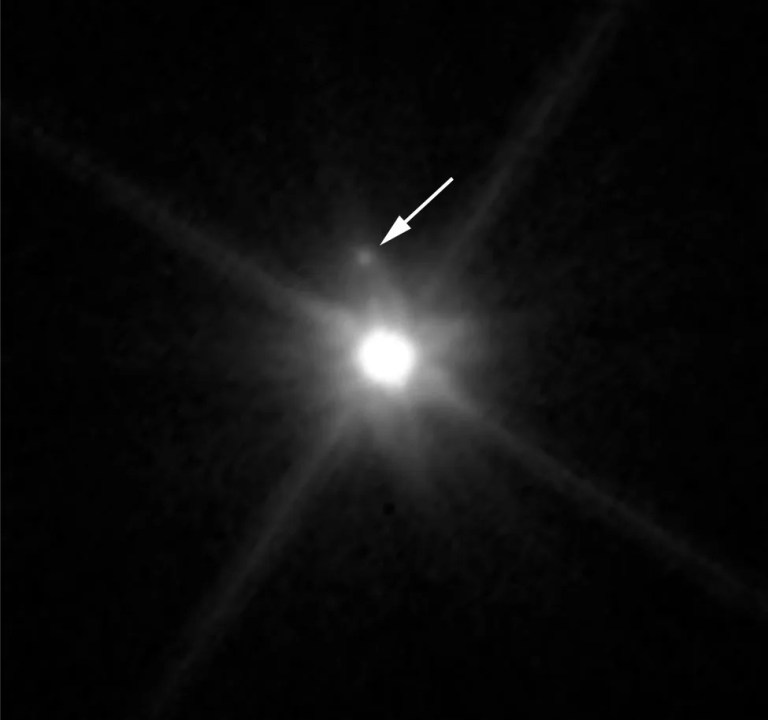 Only about 100 miles in diameter, the tiny dot above the dwarf planet Makemake seen in this Hubble image is its orbiting moon, nicknamed MK 2.NASA, ESA, and A. Parker and M. Buie (SwRI)
Only about 100 miles in diameter, the tiny dot above the dwarf planet Makemake seen in this Hubble image is its orbiting moon, nicknamed MK 2.NASA, ESA, and A. Parker and M. Buie (SwRI)
Learn More
Hubble Science Highlights
Discover the breadth and depth of Hubble's exciting discoveries!
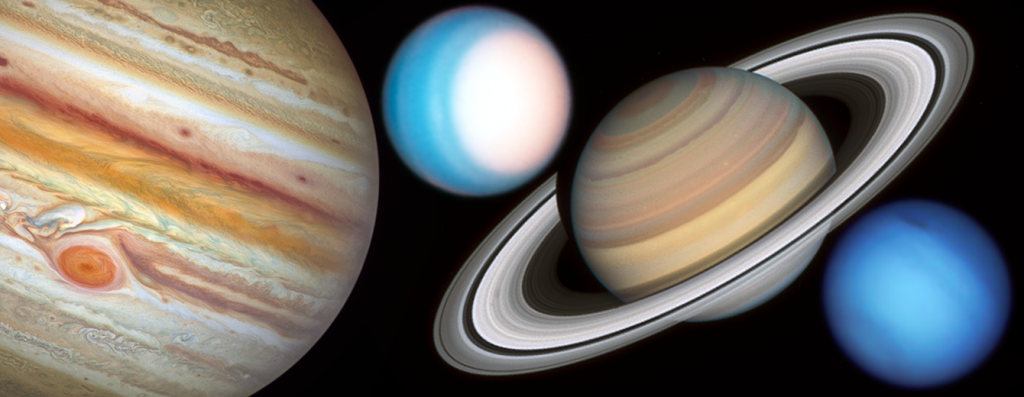
Studying the Planets and Moons
Hubble’s systematic observations chart the ever-changing environments of our solar system's planets and their moons.
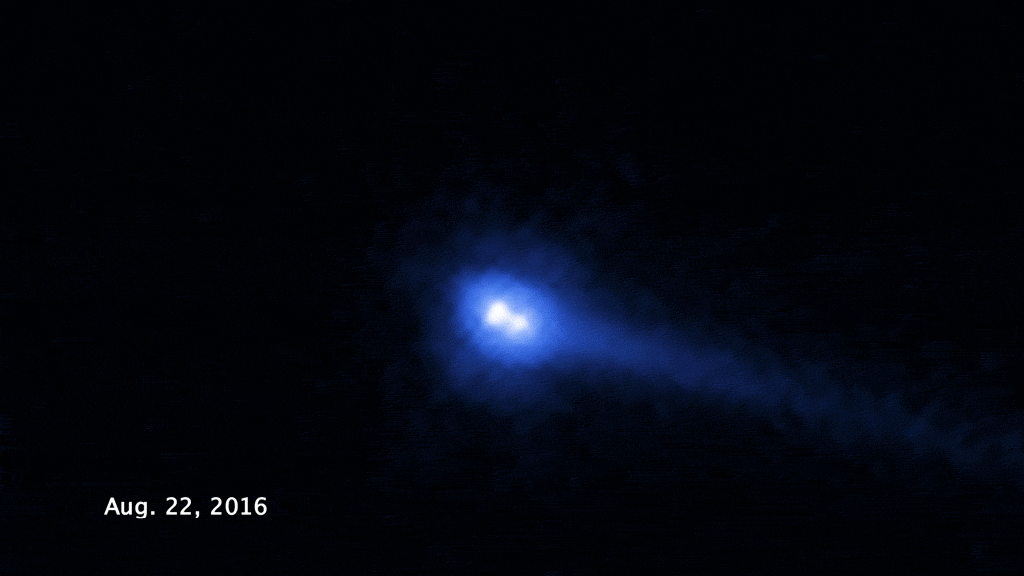
Tracking Evolution in the Asteroid Belt
These conglomerates of rock and ice may hold clues to the early solar system.
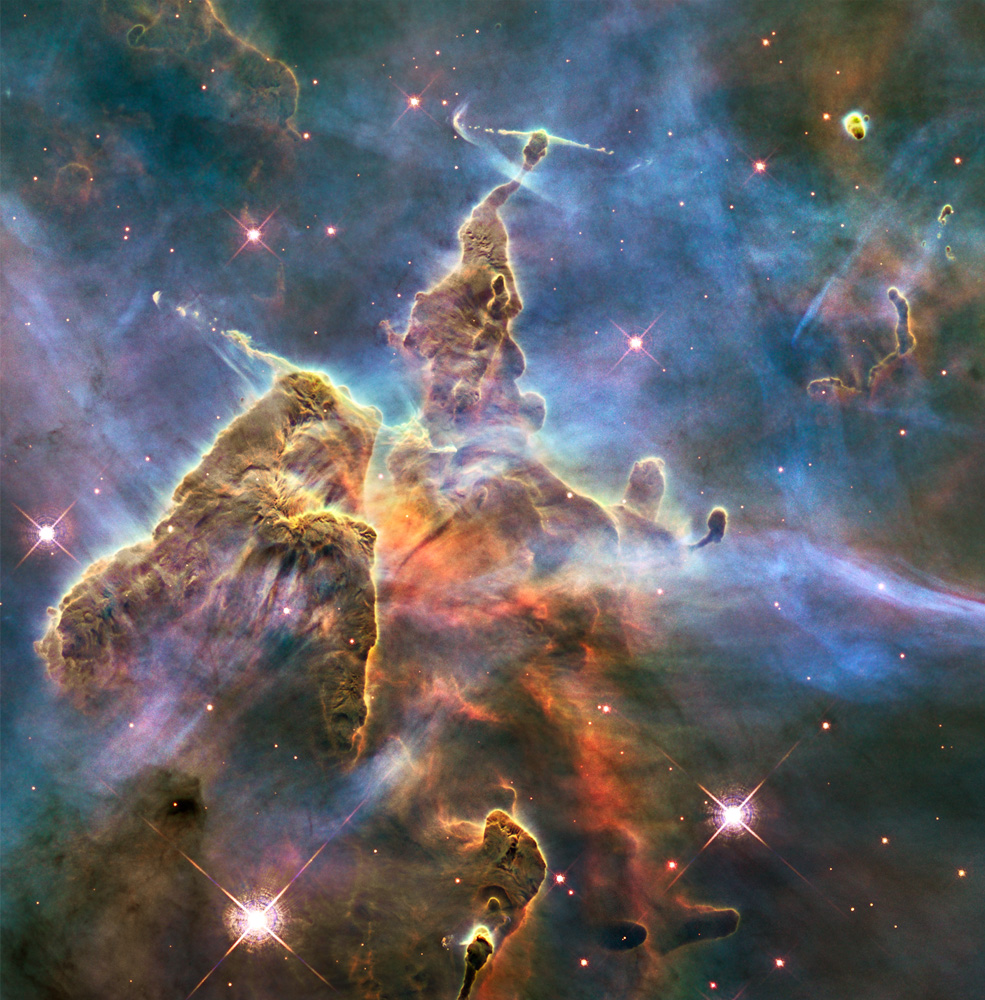
Exploring the Birth of Stars
Seeing ultraviolet, visible, and near-infrared light helps Hubble uncover the mysteries of star formation.
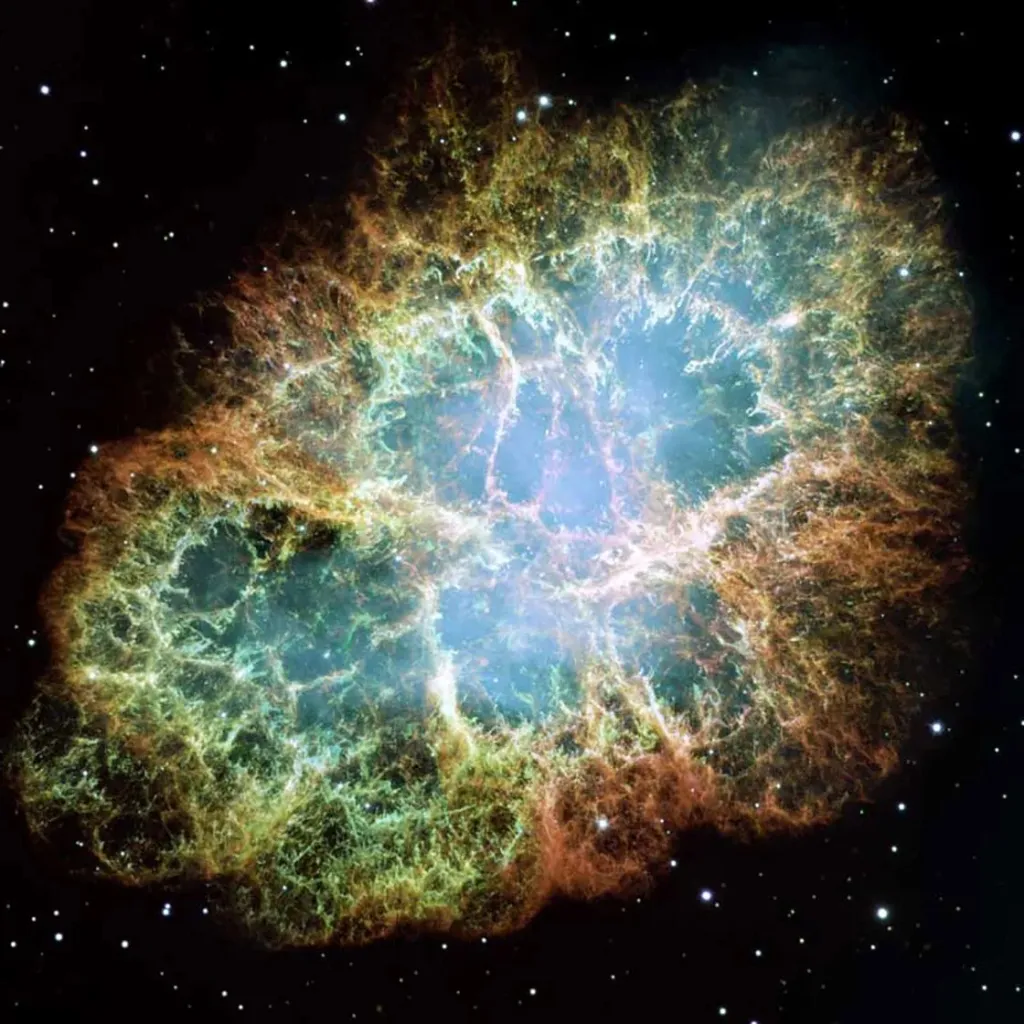
The Death Throes of Stars
When stars die, they throw off their outer layers, creating the clouds that birth new stars.
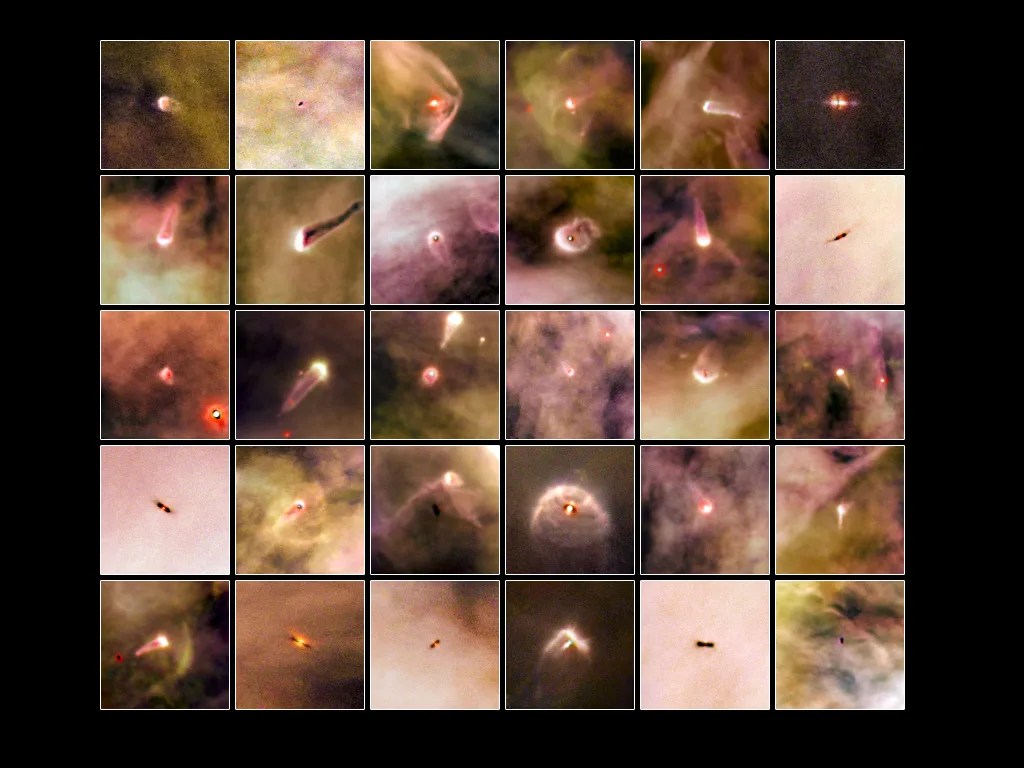
Finding Planetary Construction Zones
Hubble’s sensitivity uncovers the seeds of planets in enormous disks of gas and dust around stars.
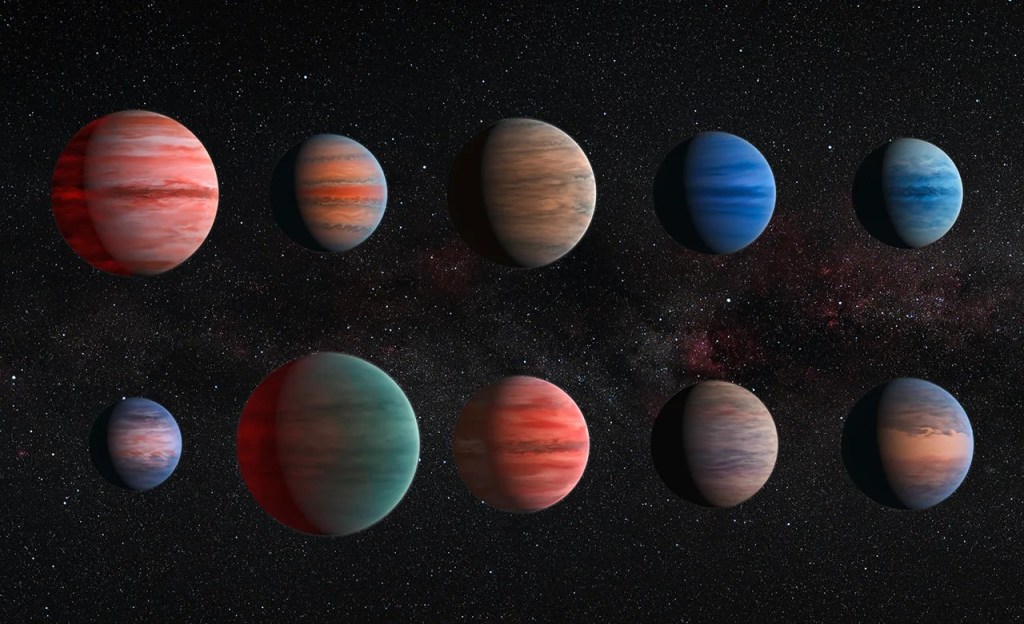
Recognizing Worlds Beyond Our Sun
Hubble can detect and measure the basic organic components for life on planets orbiting other stars
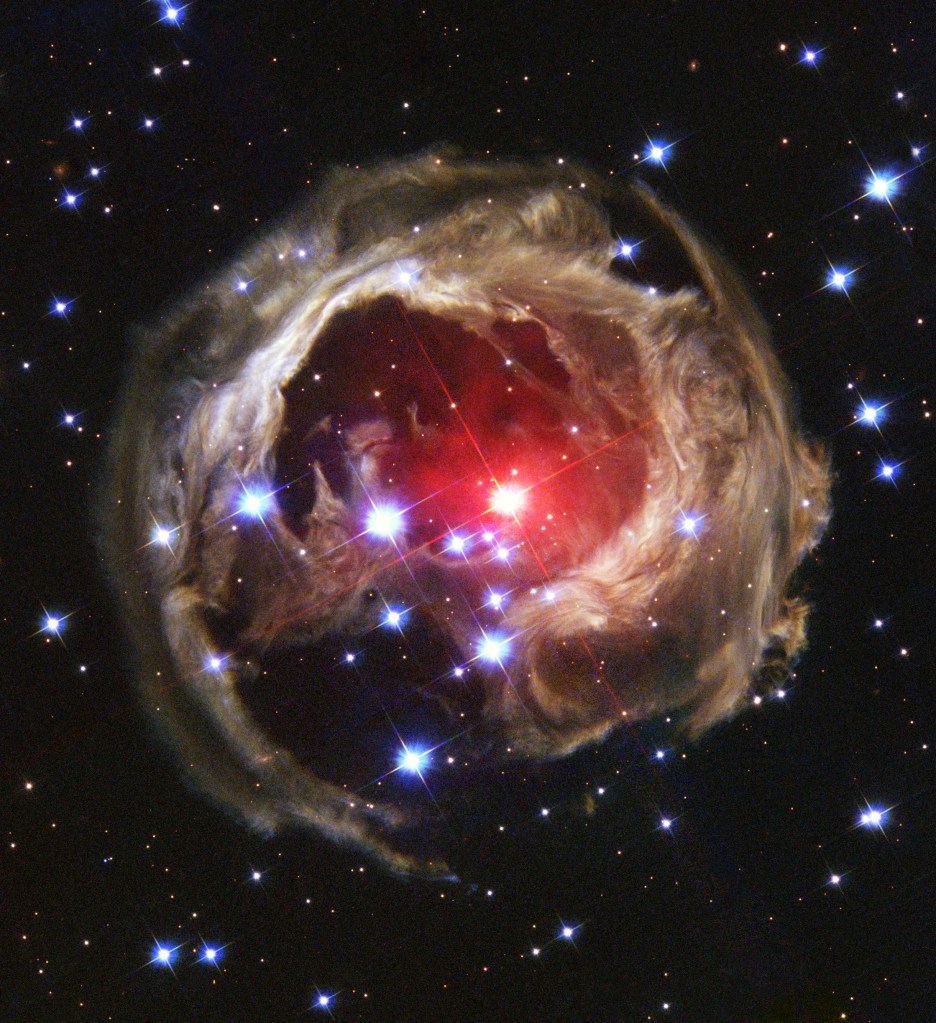
Seeing Light Echoes
Like ripples on a pond, pulses of light reverberate through cosmic clouds forming echoes of light.
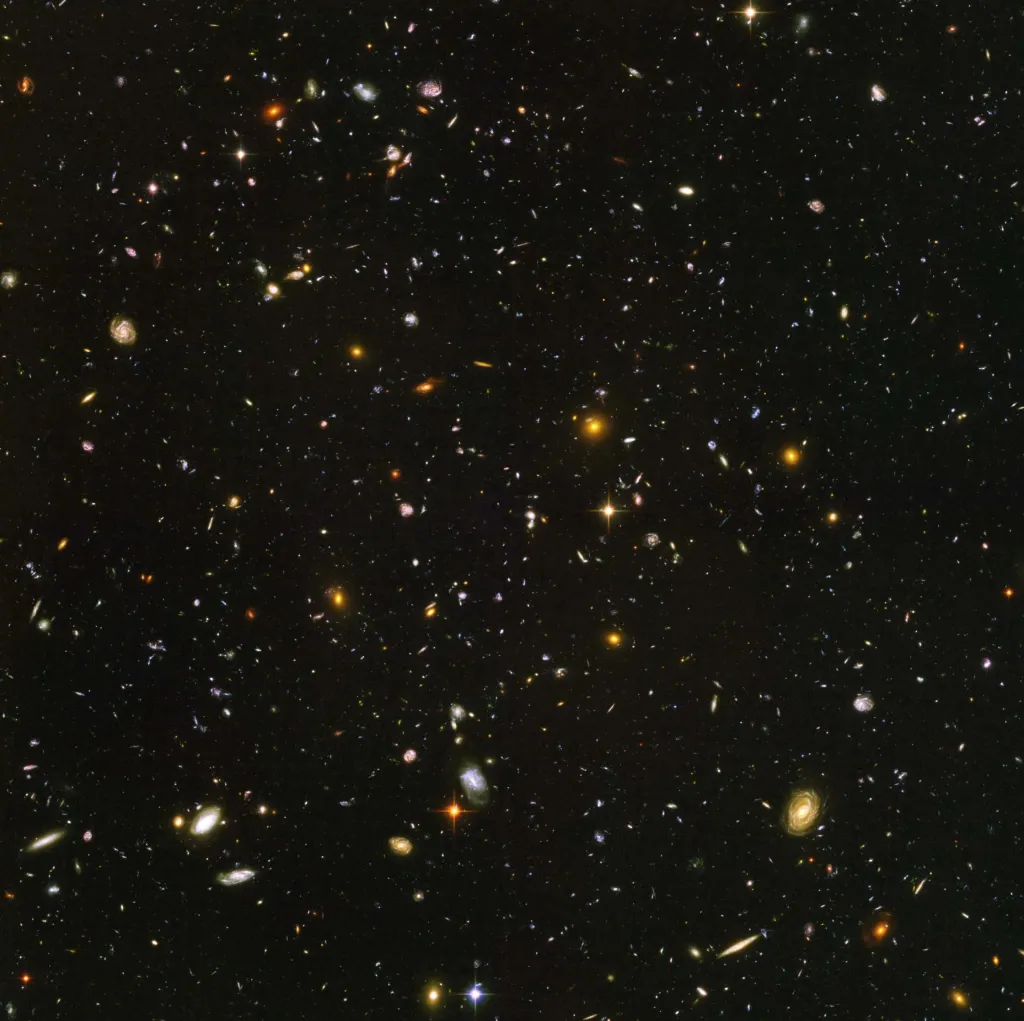
Tracing the Growth of Galaxies
Hubble's Deep Field observations are instrumental in tracing the growth of galaxies.
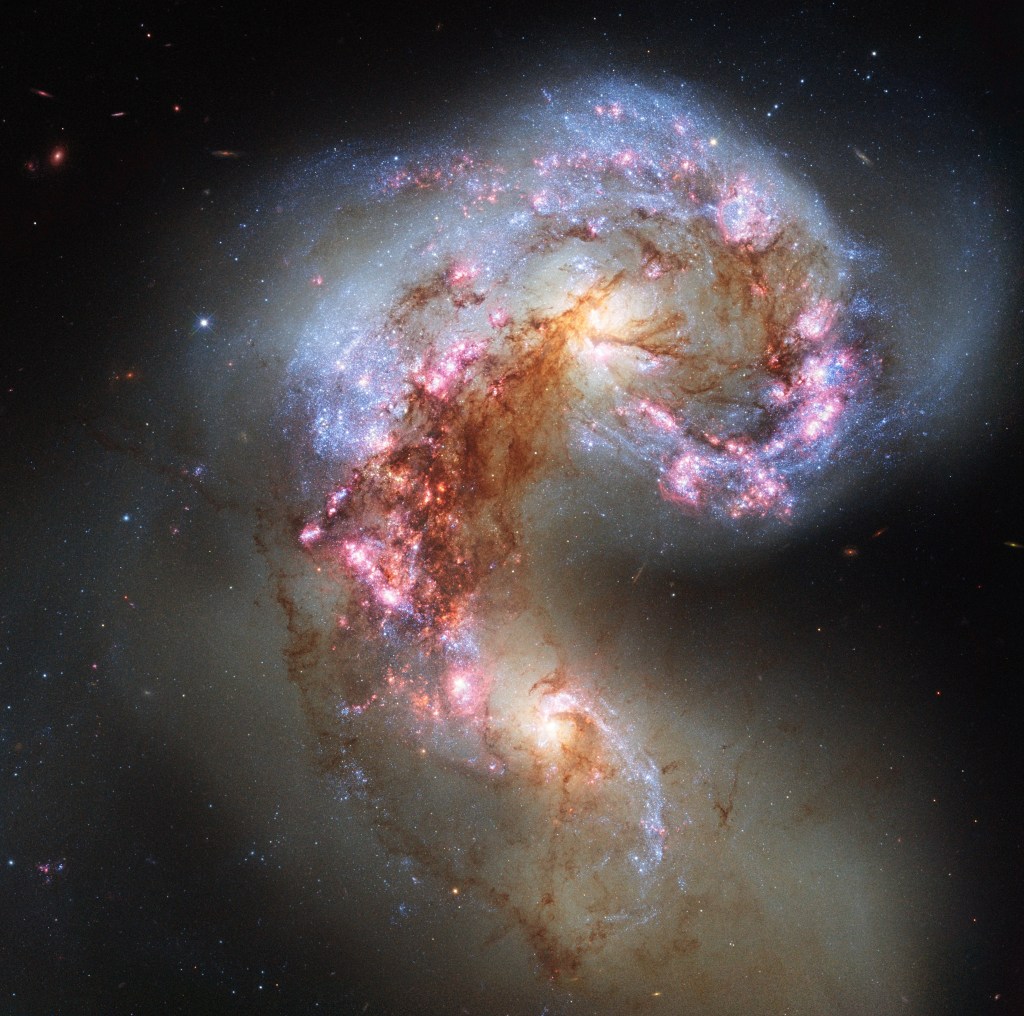
Galaxy Details and Mergers
Galaxies evolve through gravitational interaction with their neighbors, creating a menagerie of forms.
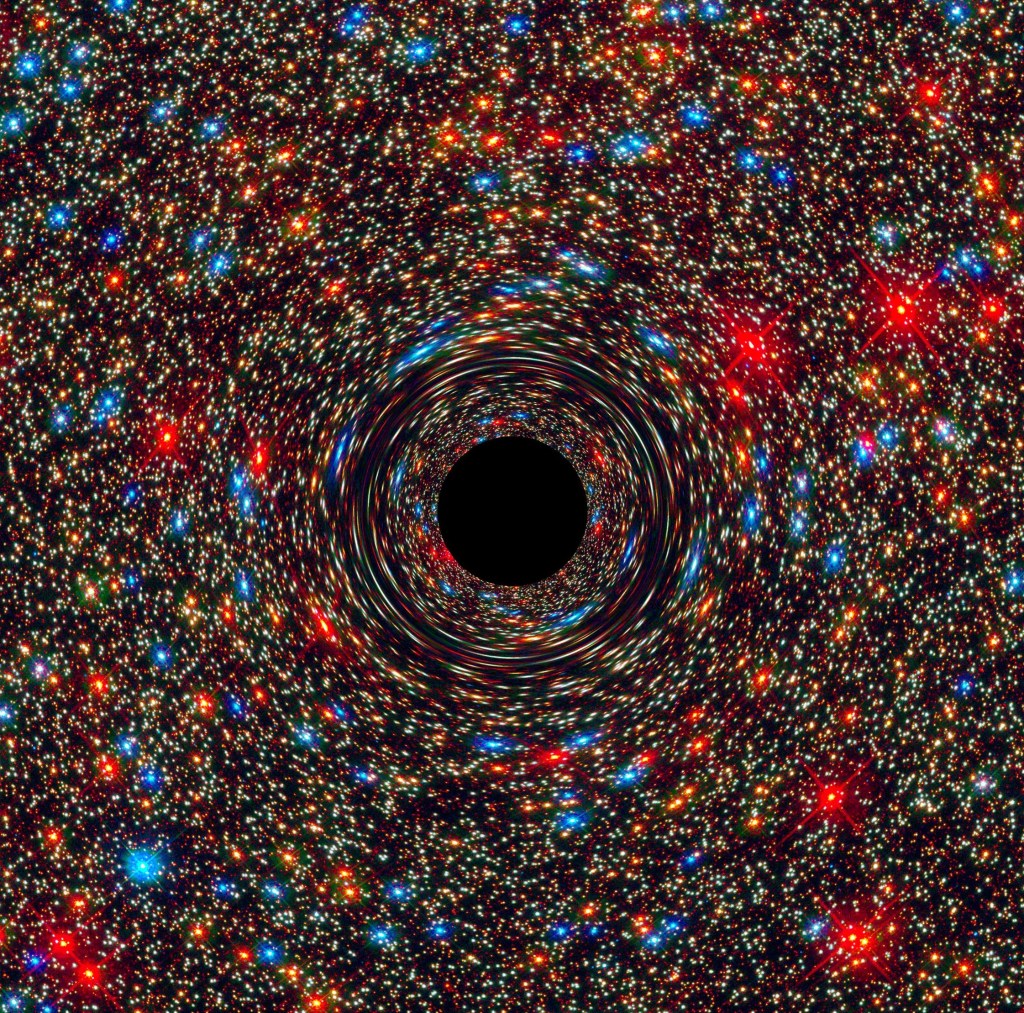
Monster Black Holes are Everywhere
Supermassive black holes lie at the heart of nearly every galaxy.
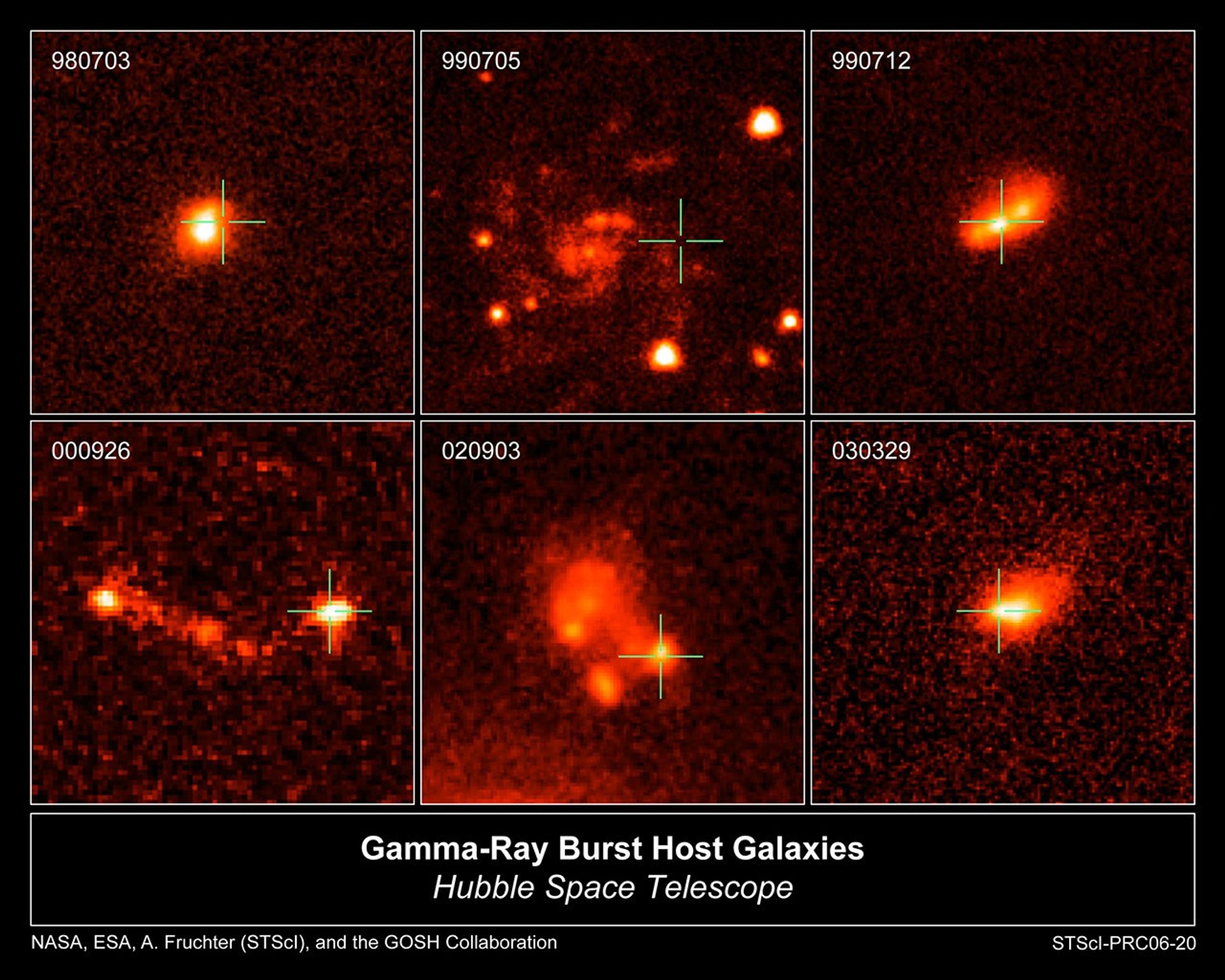
Homing in on Cosmic Explosions
Hubble helps astronomers better understand and define some of the largest explosions in the universe.
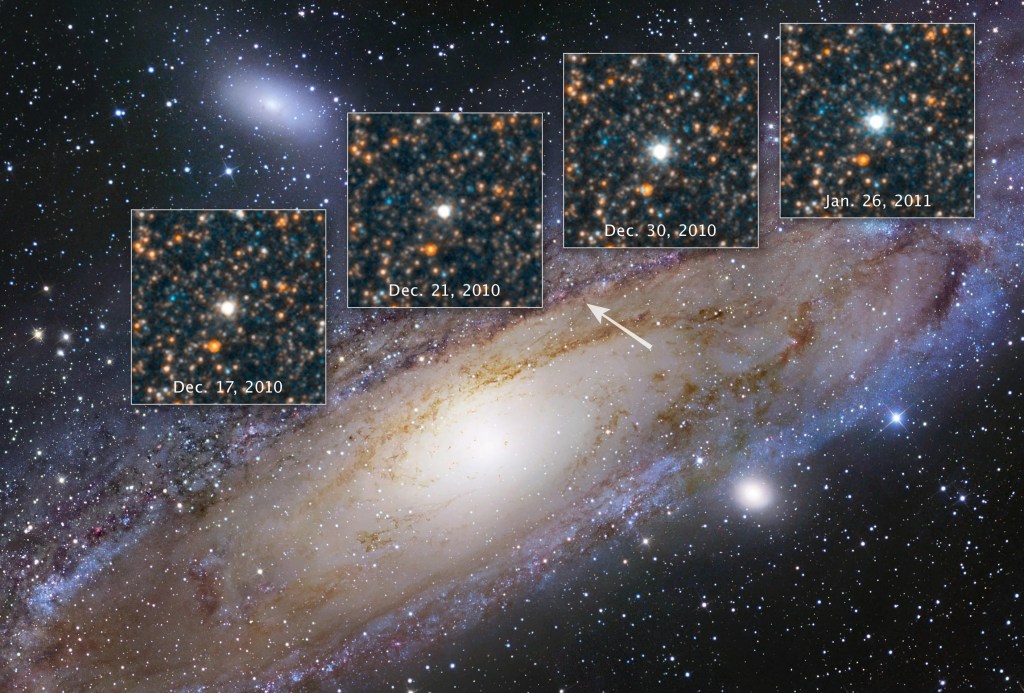
Discovering the Runaway Universe
Our cosmos is growing, and that expansion rate is accelerating.
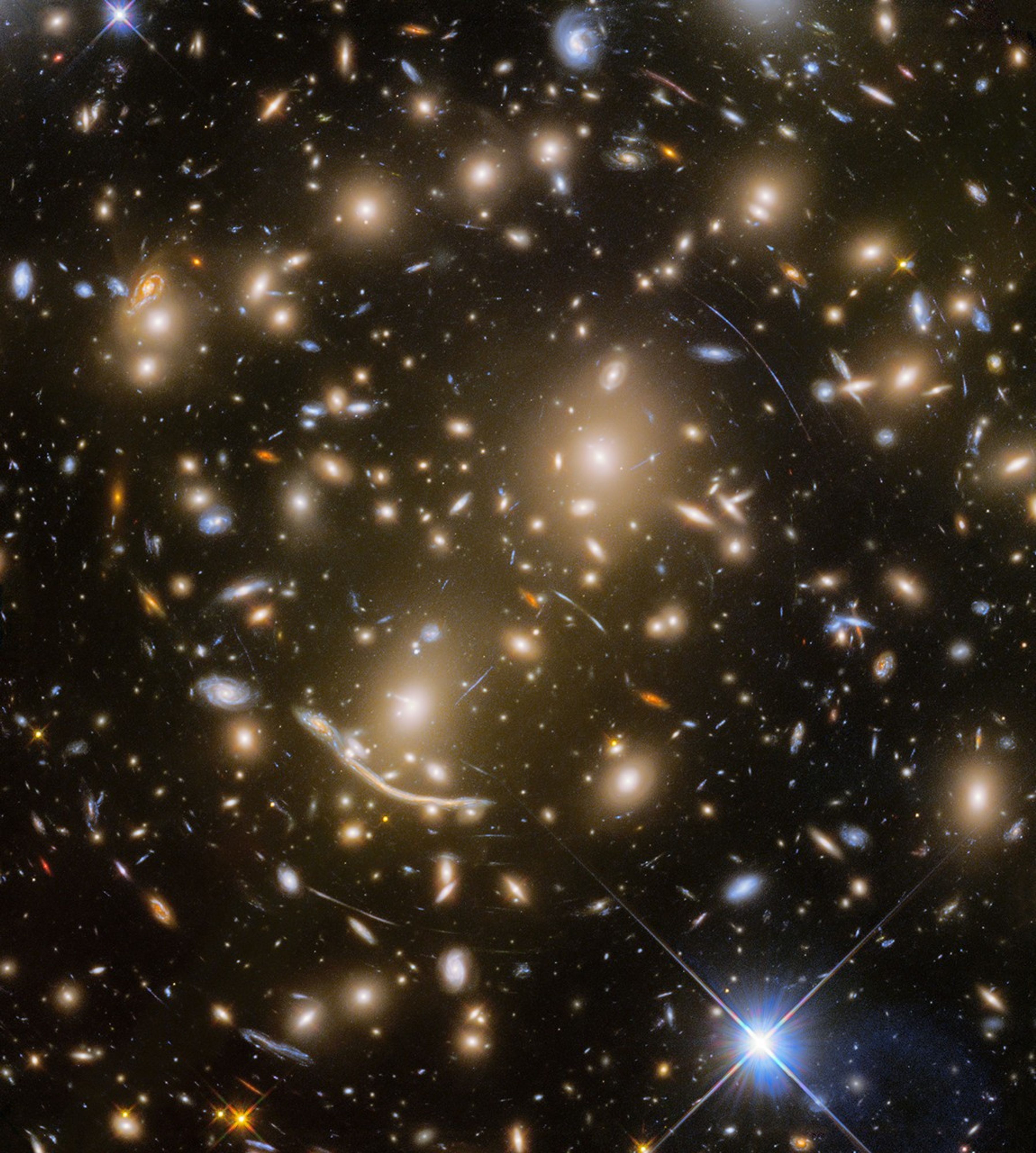
Focusing in on Gravitational Lenses
Gravitational lenses are 'Nature's Boost', expanding our view deeper into space and farther back in time.
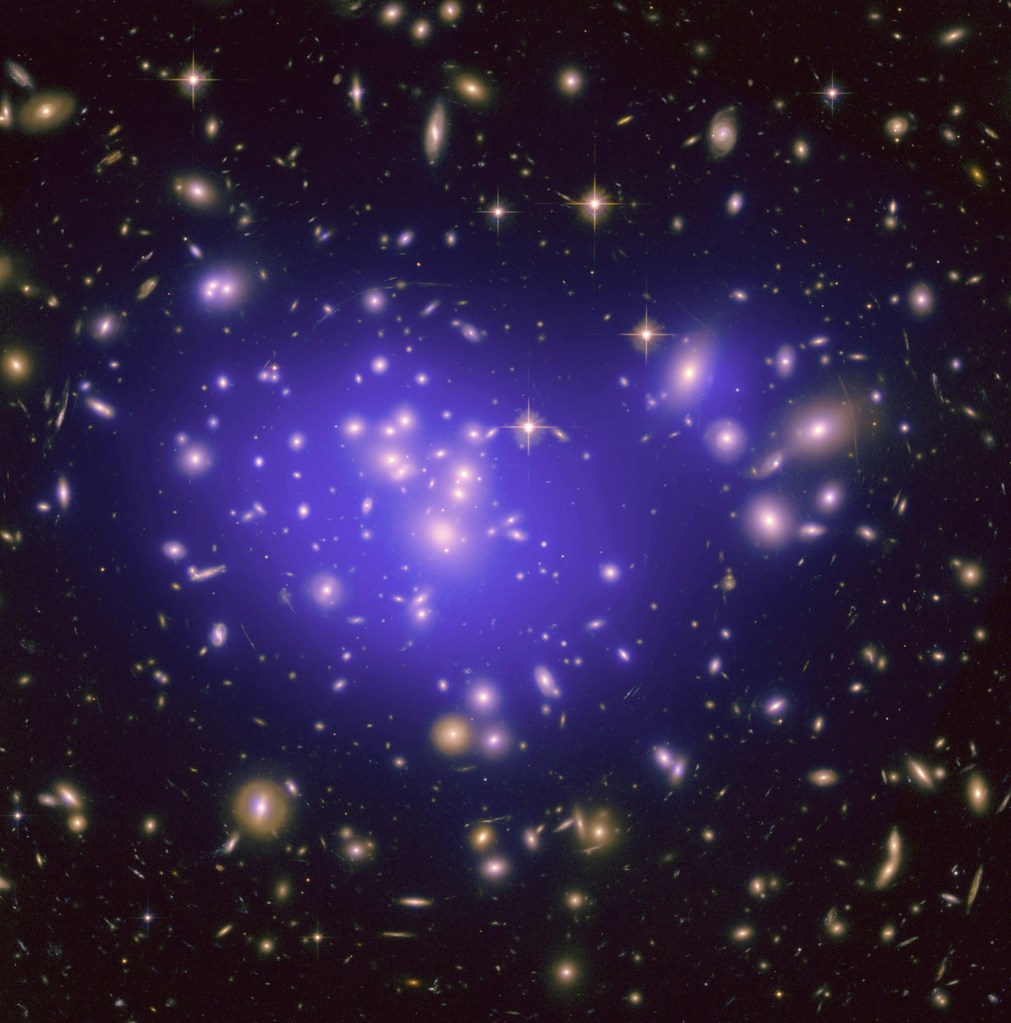
Shining a Light on Dark Matter
The gravitational pull of dark matter guides the formation of everything we can see in the universe.

Mapping the Cosmic Web
Filaments and sheets of matter create an interconnected web that forms the large-scale structure of the universe.



























